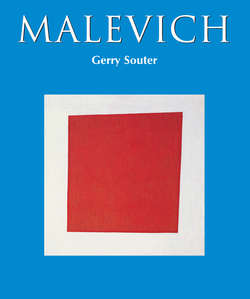Читать книгу Malevich - Gerry Souter - Страница 6
II. The Discovery of Art and His Experimentations: Impressionism, Fauvism, Cubism and Futurism
Impressionism and Experimentation
ОглавлениеAt this point in his career, Kasimir Malevich was an open vessel, seeking a style that he could embrace. He participated in the second exhibition of the group Soyus Molod’ozhi (Union of Youth) in St. Petersburg in 1911 with some success.
Besides his Russian and Ukrainian contemporaries, Malevich had access to one of the great collections of Western contemporary art assembled by Sergei Shchukin. The heir to a very wealthy textile manufacturer and director of two textile plants, Shchukin had the capital to invest in art. Beginning in the 1890s, he carved a swathe through the Paris galleries, crating and shipping works of Renoir, Pissarro, Monet and continued into the new century with purchases of Van Gogh and Gauguin. The early canvasses of Cézanne were plucked off the walls and from gallery racks before most of the art world had recognized the Frenchman’s genius. Alongside 21 Cézanne works that found appreciation in Shchukin’s mansion, between 1909 and 1913, thirty-five Picassos were purchased, beginning with his painting Lady With a Fan.
If any Western painter besides Cézanne was lionized in the East, it was Paul Gauguin. The June 1909 issue of the art newsletter, Zolotoe Runo (The Golden Fleece) displayed ten pages of Gauguin’s wood reliefs and sculpture taken mostly from the Paris collection of Gustav Feyet. This publication, a fine arts journal, was begun in 1906 and documented both the traditional and avant garde inside and outside Russia.
The relative isolation of Eastern artists was eased quite a bit by these publications and private collections – especially in the case of Shchukin who opened his mansion to the public (and particularly to artists) to see and sketch the works.[7]
Malevich’s exposure to Gauguin and Cezanne over the first decade of the twentieth century is not difficult to trace in his peasant sketches and paintings. His pencil sketches for Women at Church (1911) have a Gauguinesque quality in their repetitive images and ritual gestures in a single picture plane and the mask-like treatment of the babushka-wrapped faces. In rendering them as masks, he draws on his icon studies wherein the faces that looked down on peasant life from the sacred paintings were not divine faces, but were the transfigured images of ordinary people. By the time the sketches reached their oil painted result, the crowded canvas, subdued colours and heavily outlined colour shapes bring in the influence of Cezanne’s pre-Cubist predictions.
The Woodcutter II, end of 1912.
Конец ознакомительного фрагмента. Купить книгу
7
Charlotte Douglas, Malevich, Harry N. Abrams, Inc., NYC, 1994, p. 10–11.
